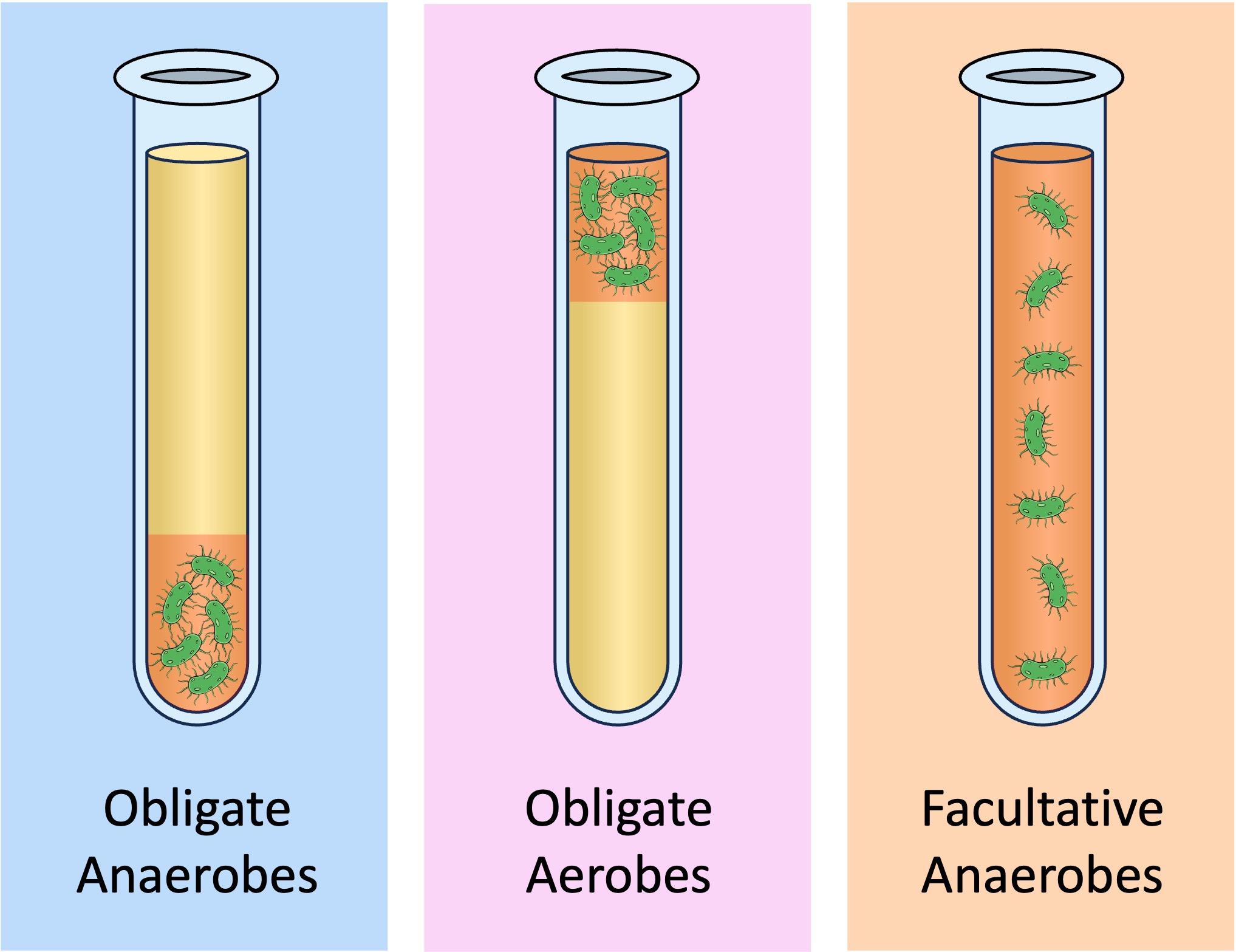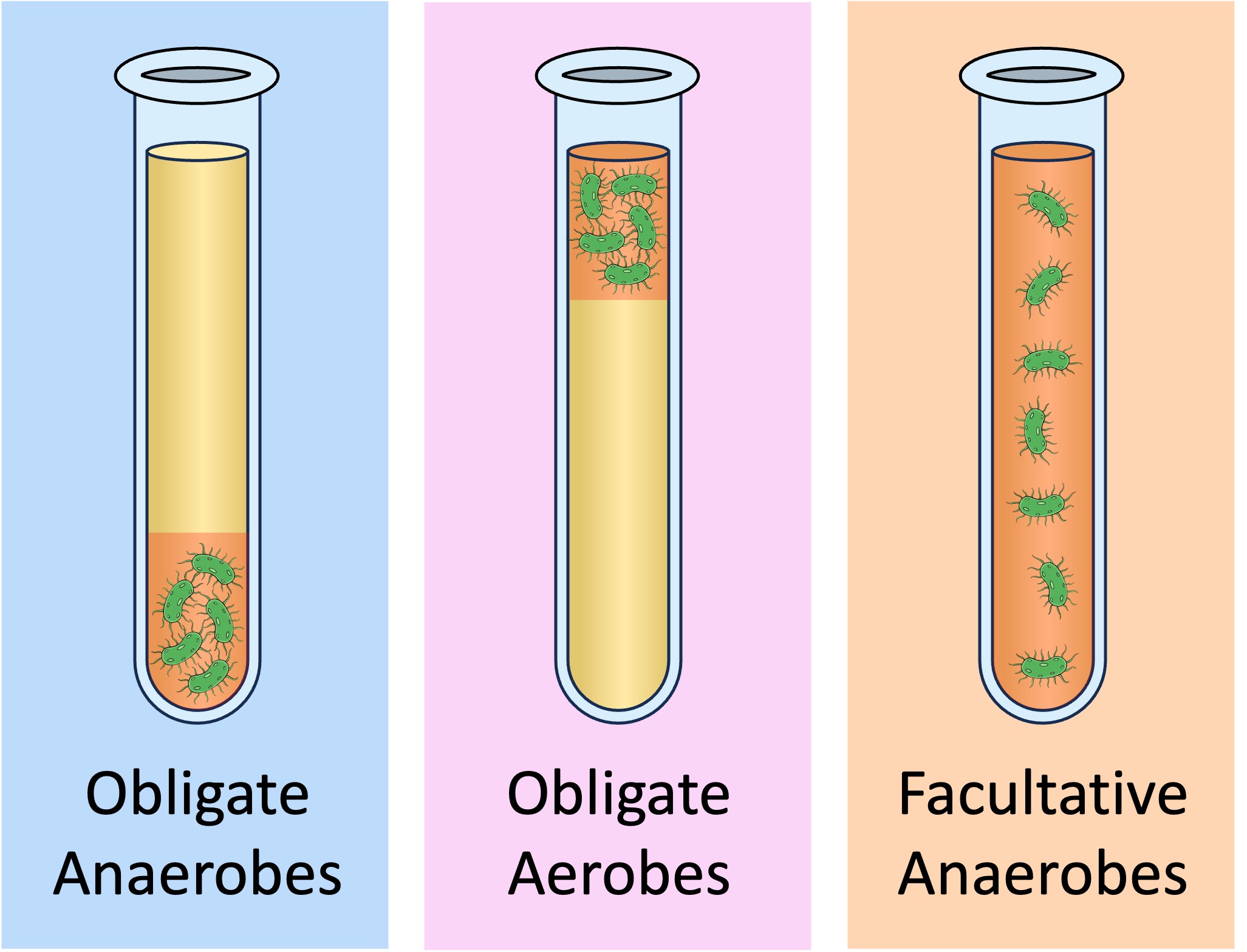

Mode of Respiration
All living organisms carry out some form of cell respiration (aerobic or anaerobic) in order to produce ATP
-
Organisms can be classed as facultative or obligate according to their tolerance for other types of respiration
Obligate anaerobes
-
Obligate anaerobes are single celled organisms that only carry out anaerobic respiration – they cannot survive in the presence of oxygen
-
The first bacteria were likely obligate anaerobes as they were able to survive in Earth's reducing atmosphere prior to photosynthesis
-
Modern obligate anaerobes can only be found in oxygen-free environments – such as the deep sea, lower layers of soil or within the bodies of certain organisms
Obligate aerobes
-
Obligate aerobes are organisms that cannot survive in the absence of oxygen – they rely on aerobic respiration to produce sufficient quantities of ATP
-
These organisms may be able to carry out anaerobic respiration in conjunction with aerobic respiration, but cannot survive on anaerobic respiration alone
-
Most animals, plants and fungi are obligate aerobes, along with certain types of bacteria
Facultative anaerobes
-
Facultative anaerobes will normally respire aerobically, but can fully switch to anaerobic respiration in the absence of oxygen
-
These organisms can tolerate oxygen but also experience no long-term negative effects from its absence
-
Examples of facultative anaerobes include yeast (S. cerevisiae) and certain types of bacteria (E. coli)
Respiration Patterns






